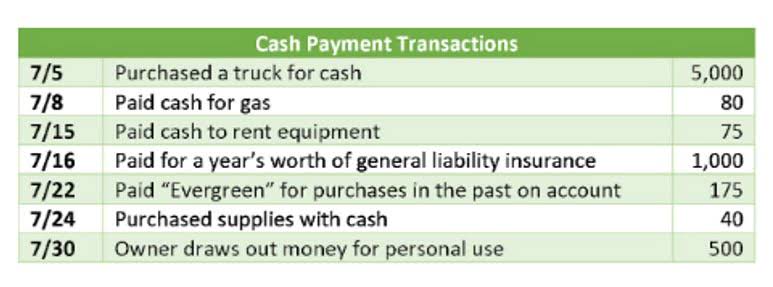
By utilizing borrowed funds, companies can invest in growth opportunities that may yield higher returns than the cost of the debt. This strategic use of leverage allows firms to amplify their earnings per share and overall return on equity, making them more retained earnings attractive to investors. Financial leverage refers to the use of borrowed funds to amplify a company’s potential returns.
Operating leverage
While financial leverage successful use of financial leverage requires a firm to can provide benefits by increasing the potential returns, it also comes with significant risks that cannot be overlooked. To put it simply, the higher the degree of financial leverage, the larger the possibility of bankruptcy. One of the most exciting aspects about using financial leverage is the possibility of achieving high returns.
- Understanding the balance between debt and equity is crucial for assessing a company’s risk profile and profitability potential.
- Crucially, financial leverage can help boost investment results by increasing the Return on Equity (ROE).
- However, it’s easy to distort these ratios if management leases the company’s assets without capitalizing on the assets’ value on the company’s balance sheet.
- The interest coverage ratio is very important because it indicates a company’s ability to have enough pre-tax operating income to cover the cost of its financial burden.
- Too much short-term debt in comparison to long-term debt increases a company’s financial leverage and exposes them to high risk when the economy struggles, potentially leading to bankruptcy.
A. How leverage can amplify returns
By utilizing borrowed funds, companies can increase their return on equity, as they are able to invest more capital than they would with only their own resources. This amplification of returns can be particularly beneficial in environments where investment opportunities yield returns greater than the cost of debt. Ultimately, the goal is to use leverage to enhance profitability while maintaining a manageable risk profile.

B. The impact of borrowing costs on profitability

If a company experiences a downturn or its investments do not yield expected returns, the cost of servicing the debt can lead to significant losses. Thus, the balance between debt and equity is crucial for maintaining financial health. For most companies, financial capital is raised by issuing debt securities and by selling common stock. The amount of debt and equity that makes up a company’s capital structure has many risk and return implications. Therefore, corporate management must use a thorough and prudent process for establishing a company’s target capital structure. The capital structure is how a firm finances its operations and growth by using different sources of funds.
The equity multiplier attempts to understand the ownership weight of a company by analyzing how assets have been financed. A company with a low equity multiplier has financed a large portion of its assets with equity, meaning they are not highly leveraged. For example, start-up technology companies may struggle to secure financing and must often turn to private investors. Therefore, a debt-to-equity ratio of .5 ($1 of debt for every $2 of equity) may still be considered high for this industry. For example, a company with a high proportion of current liabilities may have a low leverage ratio but a high degree of risk because it needs to repay its obligations in the near term. Let’s take an example of a small business that borrowed $200,000 at an interest rate of 6% annually to expand operations.

What Is a Good Financial Leverage Ratio?

This duality creates an environment where earnings volatility becomes a critical concern for stakeholders. We will discuss the relationship between financial leverage and return on equity (ROE), highlighting how increased leverage can lead to higher ROE under favorable conditions. However, it is essential to recognize the potential downsides, such as increased interest obligations and the risk of insolvency during downturns. Perhaps the best way to illustrate the positive impact of financial leverage on a company’s financial performance is by providing a simple example. After all, the goal of every business is to maximize shareholder wealth, and the ROE is the metric of return on shareholder’s investment.
- As the name implies, leverage magnifies both gains and losses, so the potential for losses increases as leverage increases.
- Leverage is best used in short-term, low-risk situations where high degrees of capital are needed.
- Leverage, when employed judiciously, can serve as a potent tool in your financial arsenal.
- Another important metric is the degree of financial leverage (DFL), which measures the sensitivity of a company’s net income to changes in its operating income.
- Through these measures, companies can minimize risk and maximize profitability in a volatile economy.
- A higher degree of leverage can lead to a more significant impact on these ratios, reflecting the potential for enhanced earnings.
III. The Relationship Between Financial Leverage and Profitability
- By using borrowed capital to invest in growth opportunities, companies can amplify their returns.
- However, with these advantages come increased earnings variability and the potential for an increase in the cost of financial distress, perhaps even bankruptcy.
- One potential pitfall is the amplified risk of financial distress and bankruptcy.
- Ultimately, the impact of financial leverage on profitability is contingent upon various factors, including market conditions, the cost of debt, and the company’s operational efficiency.
- A downturn in business performance can quickly lead to a situation where the company struggles to meet its financial obligations.
This means managing a balance between equity and debt, with consideration for the cost of each type of capital. When the cost of debt is lower than the cost of equity, a company can choose to use more debt financing to increase its financial leverage. This, however, raises the risk of inability to meet its debt obligations, particularly in an unfavorable economy. Therefore, companies need to ensure that their leverage does not risk their solvency.
How we make money
Under both of these circumstances, the use of financial leverage increases the company’s profits. By borrowing money (debt) to invest in something like a property or a stock, you’re magnifying the potential returns you could see. If the investment performs well and earns more than the interest you pay on the loan, you end up profiting more than if you had only used your own cash. There are several ways that individuals and companies can boost their equity base. Leverage is also an investment strategy that uses borrowed money—specifically, the use of various financial instruments or borrowed capital—to increase the potential return of an investment.
The DFL is calculated by dividing the percentage change of a company’s earnings per share (EPS) by the percentage change in its earnings before interest and taxes (EBIT) over a period. Debt is not directly considered Bookkeeping for Veterinarians in the equity multiplier; however, it is inherently included, as total assets and total equity each have a direct relationship with total debt. Instead of looking at what the company owns, you can measure leverage by looking strictly at how assets have been financed. The debt-to-equity (D/E) ratio is used to compare what the company has borrowed to what it has raised from private investors or shareholders.
